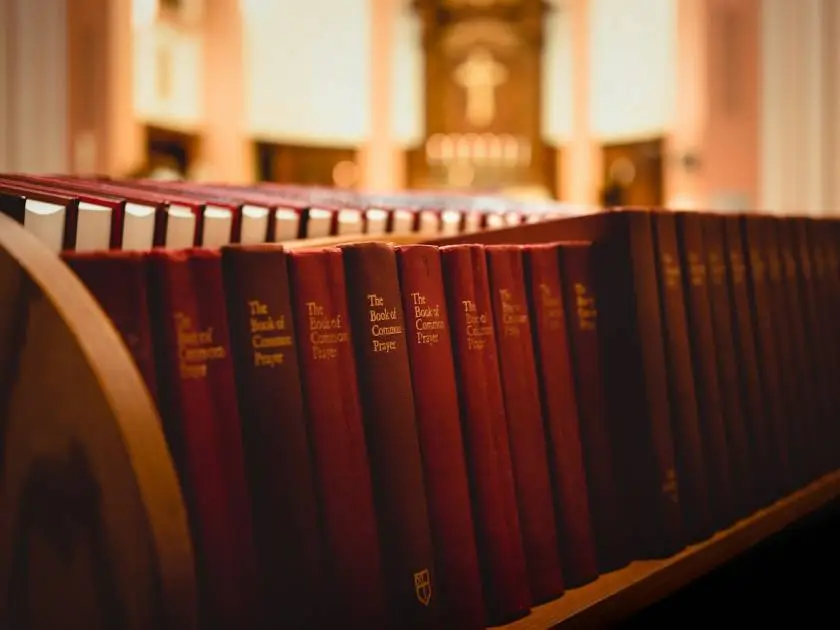House Church Using Book Of Common Prayer

Originally authorized by King Edward VI (1537–1553) to guide the liturgy of the Anglican Church, the canonical liturgical service book of the Church of England is known by its shorter title, House Church Using Book Of Common Prayer. The first prayer book to include all of the forms of service for both Sunday and everyday worship in the English language was the first one, published in 1549.
Read Also: Animals Playing Instruments Children Books: Uniting Music and Imagination
What is the significance of the Book of Common Prayer in house churches?

Origin
Throughout the Protestant Reformation, four different editions of the Book of Common Prayer were created. Prior to the Reformation, the Church of England's service books, which comprised the Missals, Breviaries, and other liturgical forms of the Roman Catholic Church, were mostly in Latin. However, several English liturgies were also included.
Thomas Cranmer (1489–1556), the first Protestant Archbishop of Canterbury and a key figure in the English Reformation, was principally responsible for compiling the initial prayer book. Cranmer and a committee were tasked by King Edward VI in 1548 with creating the first eucharistic liturgy in English. The Church of England made its first major shift toward Protestant liturgy and reformed theology in 1549 when Parliament adopted and implemented this precursor to House Church Using Book Of Common Prayer.
Changes
Cranmer and his colleagues wrote a second version of the Book of Common Prayer in 1552, which was distinctly more reformed and Protestant. This Book of Common Prayer, along with other important publications Cranmer created, laid the groundwork for Anglicanism.
Read Also: The Fragile Threads Of Power
The Catholic Queen Mary (1516–1558) reinstated medieval Catholic rites and outlawed the use of the Book of Common Prayer following the death of King Edward VI. Cranmer was imprisoned, tried for treason and heresy, found guilty, and excommunicated during Queen Mary's ruthlessly anti-Protestant rule in 1555–54. He was ultimately burnt at the stake in March of 1556.
When Queen Elizabeth I (1533–1603) took the throne of England two years after Cranmer's death, the Church began to shift back toward Protestantism. In 1559, she brought the Book of Common Prayer back into use, albeit with some changes.
The last changes to the prayer book were made in 1642 under King Charles II and in 1604 under King James I. The Act of Uniformity established the 1662 edition, which the Church of England was required to use. Even now, the church still uses it as its official prayer book.
The Book of Common Prayer was produced in Scottish, Irish, Canadian, and American versions as the Church of England expanded into a global (Anglican) movement. The Episcopal Church in the United States uses the American prayer book from 1789, which was significantly updated in 1892, 1928, and 1979.
Contents

In order to provide a single, handy, comprehensive volume in English that would serve as an authoritative manual for the priests and members of the Church of England, the Book of Common Prayer was first assembled with the goals of reforming, streamlining, and combining the Latin liturgies of the medieval church.
Morning and evening prayers, the whole Psalter (book of Psalms), and services for communion, baptism, funerals, and nearly every other event, including marriage and ordination, are all included in the Prayer Book. 39 Articles of Religion, which outline the core tenets of the Anglican church, are also included in the book.
Must Know: Books Similar To Percy Jackson And The Olympians
Many of the Roman Catholic rituals, such as the invocation of the Spirit in the Communion Canon and prayers for the deceased, were removed in the second edition of 1552. The Black Rubric was added to this noticeably more Protestant edition of the prayer book to clarify that kneeling to take communion does not amount to adoration of the sacrament, and references to "the altar" were substituted with "communion table." Mass vestments were likewise replaced by the House Church Using Book Of Common Prayer.
Where can I locate the Common Prayer Book?

Initially, you will need to obtain the material. Since you have an internet connection and are reading this, you may easily and freely access the BCP in a variety of flavors. Even while you might prefer a physical copy that you can touch in your hands, I suggest starting with these digital resources if you have never used written prayers like the BCP before. Because you have to flip back and forth utilizing the book's occasionally perplexing print arrangement, learning to utilize the printed edition can be intimidating. You may always start with the digital version, and if it helps,
Other Prayer Books
Common Worship, a more liberal version of the prayer book that the Assembly of the Church tried to establish in 1927, was only approved as an optional addition to the Book of Common Prayer, which was published in 1662. Common Worship is the result of several revision attempts and provides a range of alternative worship services.
The worship customs of several Christian churches that are historically connected to the Anglican Communion have been greatly impacted by the Book of Common Prayer. The Book of Common Prayer serves as the model for prayer books used by non-Anglican denominations including the Lutheran and Presbyterian churches.
Millions of Anglicans worldwide still use the Book of Common Prayer, which has undergone revisions throughout the years but still bears Thomas Cranmer's unique stamp.
Pray in fragments for the Daily Office.
The sequence for each office may seem lengthy at first look. Its length shouldn't scare you; keep in mind that it's intended to be thorough enough for use in public worship. This does not imply that you will utilize it in its whole for everyday devotions. The majority of users use specific sections of the BCP as a broad framework and ignore the others. Let's take a quick look at each part before you decide which of these elements you wish to employ.
An outline of the contents
The Daily Offices consist of three general orders: night prayer, evening prayer, and morning prayer. While night prayer is significantly shorter and less varies from day to day, morning and evening prayers are both lengthier options. The purpose of morning prayer is to start the day before the start of daily labor or leisure. The purpose of evening prayer is to serve as a sort of break at the conclusion of the workday before we go into the latter part of the day, which is spent with family, friends, and relaxation. The purpose of the night prayer is to be said right before bed.




